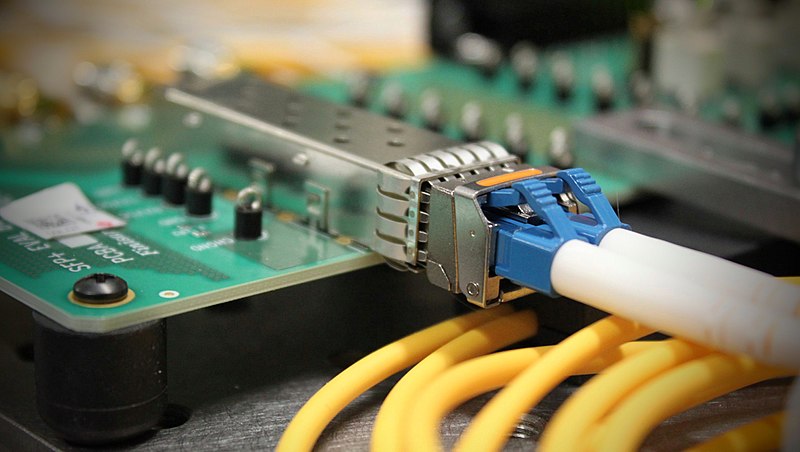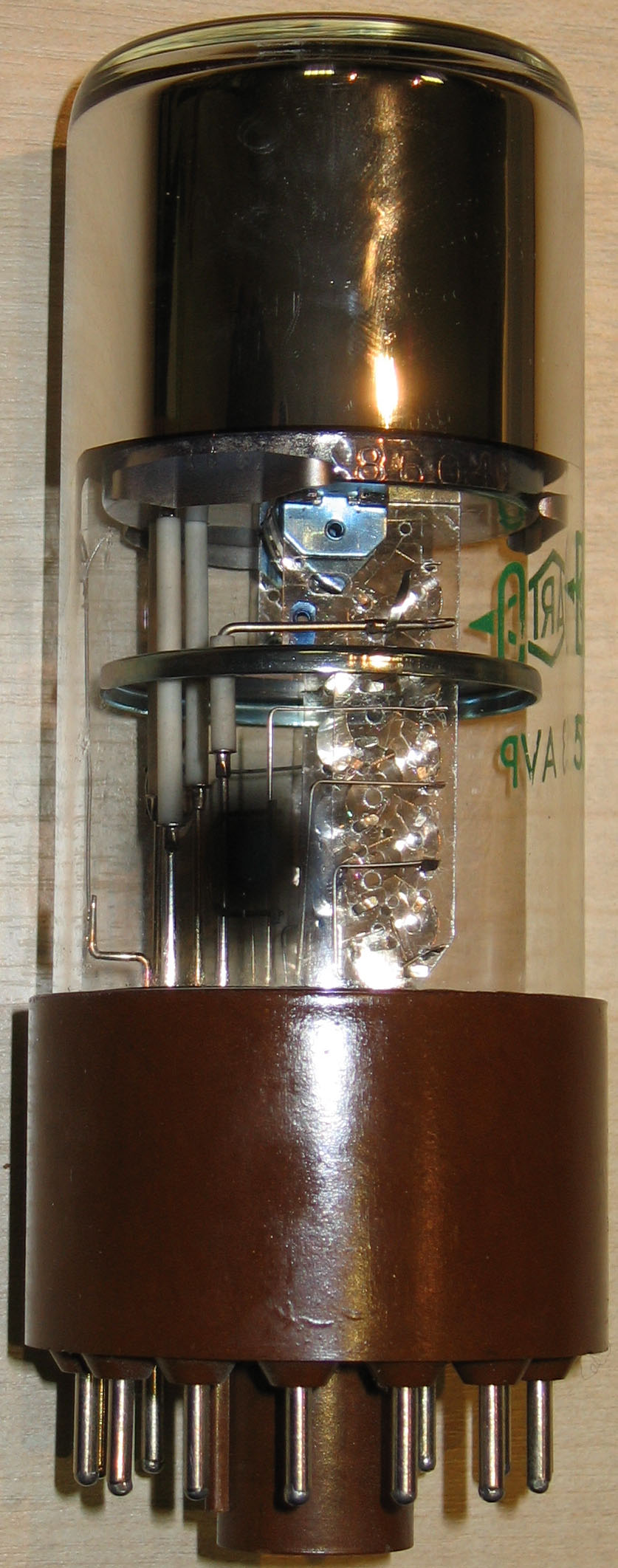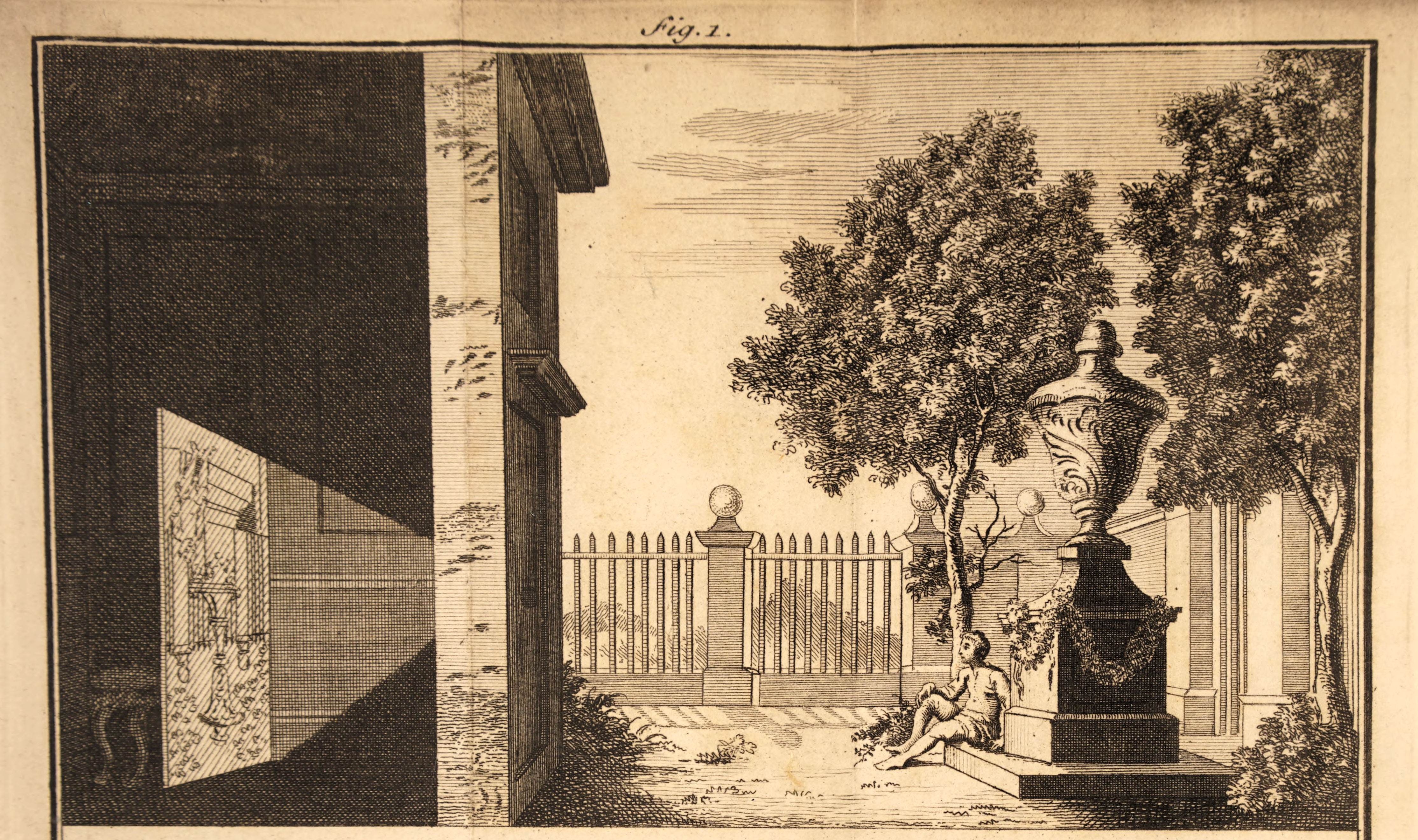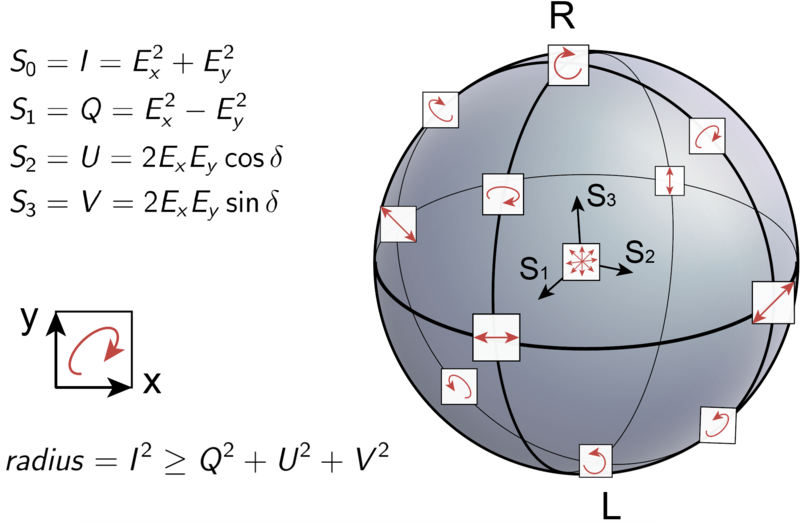Initially light was though of as a wave because it experienced interference as shown by experiments such as:
But then, some key experiments also start suggesting that light is made up of discrete packets:and in the understanding of the 2020 Standard Model the photon is one of the elementary particles.
- Compton scattering, also suggests that photons carry momentum
- photoelectric effect
- single photon production and detection experiments
This duality is fully described mathematically by quantum electrodynamics, where the photon is modelled as a quantized excitation of the photon field.
The history of light if funny.
First people thought it was a particle, as per corpuscular theory of light, notably Newton supported the corpuscular theory of light.
But then evidence of the diffraction of light start to become unbearably strong, culminating in the Arago spot.
And finally it was understood from Maxwell's equations that light is a form of electromagnetic radiation, as its speed was perfectly predicted by the theory.
But then evidence of particle nature started to surface once again with the photoelectric effect. Physicists must have been driven mad by all these changes.
The Quantum Story by Jim Baggott (2011) page 2 mentions how newton's support for the corpuscular theory of light led it to be held for a very long time, even when evidence of the wave theory of light was becoming overwhelming.
Tagged
Tagged
The Story of Light by Bell Labs (2015)
Source. Gives some ideas of the history of fiber optics. Features: Herwig Kogelnik.Fiber optics fundamentals by Shaoul Ezekiel
. Source. 2008 at MIT. Theory and demonstration.- youtu.be/0DCrIAxEv_Y?t=560:Terefore, the 1.5 micrometer window truly is the minimum.
- on smaller wavelengths, loss is due to Rayleigh scattering
- on longer wavelengths, loss is due to material absorption
Tagged
These are closely related to lasers, as they do a similar basic job: take a DC source as input and amplify light. Lasers just happen to use the input voltage to also generate the incoming light.
These are pretty cool, they are basically a laser
This one was a huge advance it seems.
It's the thing that allows you to connect fiber optics into a compter, or the corresponding port for the thing.
Many of them can take two fibers as input/output because fiber optics cables often come in pairs because it is needed for duplex.
From a practical point of view single-mode:As such, typical applications are:
- upside: can go further without a repeater. In multi-mode optical fiber, different modes travel at different speeds, and start interfering with each other at some point
- downside: lower bandwitdh, because we can fit less modes into it
- single-mode optical fiber: longer distance communications across buildings and cities
- multi-mode optical fiber: shorter distance communications e.g. within a single data center
Then there are some more hardcore threads actually pondering about specific cost trade-offs:
From a mathematical point of view:
- multi-mode: en.wikipedia.org/w/index.php?title=Optical_fiber&oldid=1229833804#Multi-mode_fiber:
Fiber with large core diameter (greater than 10 micrometers) may be analyzed by geometrical optics. Such fiber is called multi-mode fiber. In a step-index multi-mode fiber, rays of light are guided along the fiber core by total internal reflection.
- single-mode: en.wikipedia.org/w/index.php?title=Optical_fiber&oldid=1229833804#Single-mode_fiber:
Fiber with a core diameter less than about ten times the wavelength of the propagating light cannot be modeled using geometric optics. Instead, it must be analyzed as an electromagnetic waveguide structure, according to Maxwell's equations as reduced to the electromagnetic wave equation. As an optical waveguide, the fiber supports one or more confined transverse modes by which light can propagate along the fiber. Fiber supporting only one mode is called single-mode.
Another difference is that single-mode fiber usually uses lasers as the light soruce, while multi-mode fiber usually uses LED:
Bibliography:
2009 Nobel Prize lecture
. Poor Charles was too debilitated by Alzheimer's disease to give the talk himself! But if you've got a pulse, you can get the prize, so all good.The book is a bit slow until Charles K. Kao comes along, then it gets exciting.
This section is about stuff efficiently getting light into or out of optical fibers, or joining two optical fibers together end to end so that light goes through.
Historically this has been an important development, as it is much harder than with wires since optical fiber has to be very narrow to work properly, e.g. this is mentioned a lot in City of Light: The Story of Fiber Optics.
Experiments: speed of light experiments.
Bibliography:
- en.wikipedia.org/wiki/Speed_of_light#First_measurement_attempts Rømer and Christiaan Huygens reached 26% accuracy by the observation of Jupiter's moon!
Replicating the Fizeau Apparatus by AlphaPhoenix (2018)
Source. Modern reconstruction with a laser and digital camera.Visualizing video at the speed of light - one trillion frames per second by MIT (2011)
Source. Fast cameras. OK, this takes it to the next level.It is so mind blowing that people believed in this theory. How can you think that, when you turn on a lamp and then you see? Obviously, the lamp must be emitting something!!!
Then comes along this epic 2002 paper: pubmed.ncbi.nlm.nih.gov/12094435/ "Fundamentally misunderstanding visual perception. Adults' belief in visual emissions". TODO review methods...
In special relativity, it is impossible to travel faster than light.
One argument of why, is that if you could travel faster than light, then you could send a message to a point in Spacetime that is spacelike-separated from the present. But then since the target is spacelike separated, there exists a inertial frame of reference in which that event happens before the present, which would be hard to make sense of.
Even worse, it would be possible to travel back in time:
Spacetime diagram illustrating how faster-than-light travel implies time travel
. Legend an explanation are shown in this answer.Bibliography:
- physics.stackexchange.com/questions/13001/does-superluminal-travel-imply-travelling-back-in-time/615079#615079
- physics.stackexchange.com/questions/574395/why-would-ftl-imply-time-travel
- physics.stackexchange.com/questions/516767/how-does-a-tachyonic-antitelephone-work
- www.physicsmatt.com/blog/2016/8/25/why-ftl-implies-time-travel shows the causality violation on a Spacetime diagram
This is how Marie Curie was able to precisely detect radioactivity, which then led to her discovery of new elements.
Notably used for communication with submarines, so in particular crucial as part of sending an attack signal to that branch of the nuclear triad.
This is likely the easiest one to produce as the frequencies are lower, which is why it was discovered first. TODO original setup.
Also because it is transparent to brick and glass, (though not metal) it becomes good for telecommunication.
Some notable subranges:
Micro means "small wavelength compared to radio waves", not micron-sized.
Microwave production and detection is incredibly important in many modern applications:
- telecommunications, e.g. being used in
- Wi-Fi
- satellite communicationsyoutu.be/EYovBJR6l5U?list=PL-_93BVApb58SXL-BCv4rVHL-8GuC2WGb&t=27 from CuriousMarc comments on some piece of Apollo equipment they were restoring/reversing:Ah, Ciro Santilli really wishes he knew what that meant more precisely. Sounds so cool!
These are the boxes that brought you voice, data and live TV from the moon, and should be early masterpieces of microwave electronics, the blackest of black arts in analog electronics.
- 4G and other cellular network standards
- radar. As an example, 1965 Nobel Prize in Physics laureate Julian Schwinger did some notable work in the area in World War II, while most other physicists went to the Manhattan Project instead.This is well highlighted in QED and the men who made itby Silvan Schweber (1994). Designing the cavity wasn't easy. One of the key initial experiments of quantum electrodynamics, the Lamb-Retherford experiment from 1947, fundamental for modern physics, was a direct consequence of post-radar research by physicists who started to apply wartime developments to their scientific search.Wikipedia also mentions en.wikipedia.org/w/index.php?title=Microwave&oldid=1093188913#Radar_2:
The first modern silicon and germanium diodes were developed as microwave detectors in the 1930s, and the principles of semiconductor physics learned during their development led to semiconductor electronics after the war.
- microwave is the natural frequency of several important Atomic, Molecular and Optical Physics phenomena, and has been used extensively in quantum computing applications, including completely different types of quantum computer type:Likely part of the appeal of microwaves is that they are non-ionizing, so you don't destroy stuff. But at the same time, they are much more compatible with atomic scale energies than radio waves, which have way way too little energy.
- trapped ion quantum computer; Video "Trapping Ions for Quantum Computing by Diana Craik (2019)"
- superconducting quantum computer; e.g. this Junior Microwave Design Engineer job accouncement from Alice&Bob: archive.ph/wip/4wGPJ
Microwave only found applications into the 1940s and 1950s, much later than radio, because good enough sources were harder to develop.
One notable development was the cavity magnetron in 1940, which was the basis for the original radar systems of World War II.
Apparently, DC current comes in, and microwaves come out.
TODO: sample power efficiently of this conversion and output spectrum of this conversion on some cheap device we can buy today.
Finance is a cancer of society. But I have to admit it, it's kind of cool.
arstechnica.com/information-technology/2016/11/private-microwave-networks-financial-hft/ The secret world of microwave networks (2016) Fantastic article.
Lasers Transmit Market Data and Trade Execution by Anova Technologies (2014)
Source. Their system is insane. It compensates in real time for wind movements of towers. They also have advanced building tracking for things that might cover line of sight.How Microwaves Work by National MagLab (2017)
Source. A bit meh. Does not mention the word cavity magnetron!How a Microwave Oven Works by EngineerGuy
. Source. Cool demonstration of the standing waves in the cavity with cheese!420 to 680 nm for sure, but larger ranges are observable in laboratory conditions.
Tagged
William Coolidge explains medical imaging and X-rays (1940).
Source. Video sponsored by General Electric. A cool insight of this video is that a hot cathode is a more reliable electron source. Previous systems, and presumably including the discovery of X-rays, leftover gas in the tube was used. But this makes things more difficult to control, as we also want to remove as much gas as possible from the vacuum, otherwise electrons collide with the gas and lose energy before hitting the anode.How Does X ray Tube Works by BiomedEngg
. Source. Describes in particular the rotating cathode method. Interesting observation that this is especially important since the cathode cannot cool quickly due to the vacuum.Original 1931 experiment by Raman and Bhagavantam: dspace.rri.res.in/bitstream/2289/2123/1/1931%20IJP%20V6%20p353.pdf
Experimental setup to observe radiation pressure in the laboratory.
Application of radiation pressure.
First live example: en.wikipedia.org/wiki/IKAROS
You can't get more direct than this in terms of proving that photons exist!
The particular case of the double-slit experiment will be discussed at: single particle double slit experiment.
Production:
Detectors are generally called photomultipliers:
Bibliography:
- iopscience.iop.org/book/978-0-7503-3063-3.pdf Quantum Mechanics in the Single Photon Laboratory by Waseem, Ilahi and Anwar (2020)
Phenomena that produces photons in pairs as it passes through a certain type of crystal.
You can then detect one of the photons, and when you do you know that the other one is there as well and ready to be used. two photon interference experiment comes to mind, which is the basis of photonic quantum computer, where you need two photons to be produced at the exact same time to produce quantum entanglement.
One Photon In, TWO Photons Out by JQInews (2010)
Source. Features Alan Migdall of the National Institute of Standards and Technology. Produced by the Joint Quantum Institute (JQI).
Mentions that this phenomena is useful to determine the efficiency of a single photon detector, as you have the second photon of the pair as a control.
Also briefly describes how the input energy and momentum must balance out the output energy and momentum of the two photons coming out (determined by the output frequency and angle).
Shows the crystal close up of the crystal branded "Cleveland Crystals Inc.". Mentions that only one in a billion photon gets scattered.
Also shows a photomultiplier tube.
Then shows their actual optical table setup, with two tunnels of adjustable angle to get photons with different properties.
How do you produce a single photon? by Physics World (2015)
Source. Very short whiteboard video by Peter Mosley from the University of Bath, but it's worth it for newbs. Basically describes spontaneous parametric down-conversion.
One interesting thing he mentions is that you could get single photons by making your sunglasses thicker and thicker to reduce how many photons pass, but one big downside problem is that then you don't know when the photon is going to come through, that becomes essentially random, and then you can't use this technique if you need two photons at the same time, which is often the case, see also: two photon interference experiment.
Can be used to detect single photons.
Richard Feynman likes them, he describes the tube at Richard Feynman Quantum Electrodynamics Lecture at University of Auckland (1979) at one point.
It uses the photoelectric effect multiple times to produce a chain reaction. In particular, as mentioned at youtu.be/5V8VCFkAd0A?t=74 from Video 23. "Using a Photomultiplier to Detect single photons by Huygens Optics" this means that the device has a lowest sensitive light frequency, beyond which photons don't have enough energy to eject any electrons.
Using a Photomultiplier to Detect single photons by Huygens Optics
. Source. 2024. Wow this dude is amazing as usual. Unfortunately he's not using a single photon source, just an LED.Here is a vendor showcasing their device. They claim in that video that a single photon is produced and detected:
Concrete device described at: Video 19. "How to use an SiPM - Experiment Video by SensLTech (2018)".
The basic experiment for a photonic quantum computer.
Can be achieved in two ways it seems:
- macroscopic beam splitter and optical table
- photolithography
Animation of Hong-Ou-Mandel Effect on a silicon like structure by Quantum Light University of Sheffield (2014): www.youtube.com/watch?v=ld2r2IMt4vg No maths, but gives the result clear: the photons are always on the same side.
Quantum Computing with Light by Quantum Light University of Sheffield (2015)
Source. Animation of in-silicon single photon device with brief description of emitting and receiving elements. Mentions:- quantum dot source. TODO how do you produce identical photons from two separate quantum dots? See also: quantum dot single photon source.
- superconducting nanowire detector. So the device has to be cooled then? Video "Jeremy O'Brien: "Quantum Technologies" by GoogleTechTalks (2014)" youtube.com/watch?v=7wCBkAQYBZA&t=2497 however says that semiconducting devices can also be used
Quantum Optics - Beam splitter in quantum optics by Alain Aspect (2017)
Source. More theoretical approach.Building a Quantum Computer Out of Light by whentheappledrops (2014)
Source. Yada yada yada, then at youtu.be/ofg335d3BJ8?t=341 shows optical table and it starts being worth it. Jacques Carolan from the University of Bristol goes through their setup which injects 5 photons into a 21-way experiment.A squeezed coherent state of light.
Tagged
Often just called collimated light due to the collimator being the main procedure to obtain it.
However, you move very far away from the source, e.g. the Sun, you also get essentially parallel light.
The most important type of lens is the biconvex spherical lens.
Focal length
Each side is a sphere section. They don't have to have the same radius, they are still simple to understand with different radiuses.
The two things you have to have in mind that this does are:
- This is for example why you can use lenses to burn things with Sun rays, which are basically parallel.Conversely, if the input is a point light source at the focal length, it gets converted into parallel light.
- image formation: it converges all rays coming from a given source point to a single point image. This amplifies the signal, and forms an image at a plane.The source image can be far away, and the virtual image can be close to the lens. This is exactly what we need for a camera.For each distance on one side, it only works for another distance on the other side. So when we set the distance between the lens and the detector, this sets the distance of the source object, i.e. the focus. The equation is:where and are the two distances.
If you pass parallel light.
Tagged
How Carl Zeiss Crafts Optics for a $150 Million EUV Machine
. Source. Difficulty: light at those frequencies get absorbed by lenses. So you have to use mirrors instead.Can be approximated with a diaphragm.
A bit more photon-specific than optics.
Silicon Photonics: The Next Silicon Revolution? by Asianometry (2022)
Source. - youtu.be/29aTqLvRia8?t=714 GlobalFoundries seems to be one of the leaders at the time. E.g. quantum computing company PsiQuantum uses them. Part of this was from acquiring IBM's microelectronics division in 2014.
- youtu.be/t0yj4hBDUsc?t=566 mentions the paper Deep learning with coherent nanophotonic circuits
Running Neural Networks on Meshes of Light by Asianometry (2022)
Source. - youtu.be/t0yj4hBDUsc?t=440 block diagram
- youtu.be/t0yj4hBDUsc?t=456 Lightmatter lightmatter.co/ seems to be using an in-silicon Mach-Zehnder interferometer to do analog matrix multiplication with light. It is an actual analog computer element!
- www.forbes.com/councils/forbestechcouncil/2024/09/10/optical-computing-what-it-is-and-why-it-matters/ Optical Computing: What It Is, And Why It Matters (2024) by the CEO of NTT. Cites Deep learning with coherent nanophotonic circuits as a major influence in the field, which is cool.
Paper by the team that went on to found Lightmatter.
Funding:
Funding:
Homepage: www.fluxcomputing.com/
As of 2025, this company was by far the most well funded in the field.
It was founded by some of the authors of the influential paper Deep learning with coherent nanophotonic circuits.
Presented e.g. at youtu.be/t0yj4hBDUsc?t=456 from Video 29. "Silicon Photonics: The Next Silicon Revolution? by Asianometry (2022)".
Bibliography:
Funding:
- 2023: 1.1m pounds www.uktech.news/deep-tech/lumai-grant-20230215
The knowledge that light is polarized precedes the knowledge of the existence of the photon, see polarization of light for the classical point of view.
The polarization state and how it can be decomposed into different modes can be well visualized with the Poincaré sphere.
One key idea about photon polarization is that it carries angular momentum. Therefore, when an electron changes orbitals in the Schrödinger equation solution for the hydrogen atom, the angular momentum (as well as energy) change is carried out by the polarization of the photon!
Quantum Mechanics 9b - Photon Spin and Schrodinger's Cat II by ViaScience (2013)
Source. - clear animations showing how two circular polarizations can make a vertical polarization
- a polarizer can be modelled bra operator.
- light polarization experiments are extremely direct evidence of quantum superposition. Individual photons must be on both L and R states at the same time because a V filter passes half of either L or R single photons, but it passes all L + R photons
This section discusses the pre-photon understanding of the polarization of light. For the photon one see: photon polarization.
polarization.com/history/history.html is a good page.
People were a bit confused when experiments started to show that light might be polarized. How could a wave that propages through a 3D homgenous material like luminiferous aether have polarization?? Light would presumably be understood to be analogous to a sound wave in 3D medium, which cannot have polarization. This was before Maxwell's equations, in the early 19th century, so there was no way to know.
A device that modifies photon polarization.
As mentioned at Video 32. "Quantum Mechanics 9b - Photon Spin and Schrodinger's Cat II by ViaScience (2013)", it can be modelled as a bra.
Good overgrown section in the middle of Fresnel's biography: en.wikipedia.org/w/index.php?title=Augustin-Jean_Fresnel&oldid=1064236740#Historical_context:_From_Newton_to_Biot.
Particularly cool is to see how Fresnel fully understood that light is somehow polarized, even though he did not know that it was made out of electromagnetism, clear indication of which only came with the Faraday effect in 1845.
spie.org/publications/fg05_p03_maluss_law:
At the beginning of the nineteenth century the only known way to generate polarized light was with a calcite crystal. In 1808, using a calcite crystal, Malus discovered that natural incident light became polarized when it was reflected by a glass surface, and that the light reflected close to an angle of incidence of 57° could be extinguished when viewed through the crystal. He then proposed that natural light consisted of the s- and p-polarizations, which were perpendicular to each other.
Matches the quantum superposition probability proportional to the square law. Poor Étienne-Louis Malus, who died so much before this was found.
A more photon-specific version of the Bloch sphere.
In it, each of the six sides has a clear and simple to understand photon polarization state, either of:
- left/right
- diagonal up/diagonal down
- rotation clockwise/counterclockwise
The sphere clearly suggests for example that a rotational or diagonal polarizations are the combination of left/right with the correct phase. This is clearly explained at: Video 32. "Quantum Mechanics 9b - Photon Spin and Schrodinger's Cat II by ViaScience (2013)".
Poincare sphere
. Source. An optical multiplexer!
Fabry Perot Interferometer by JFC UCL (2016)
Source. Description only, reasonable animations. Considers the case of two nearby beam splitters.Fabry-Perot Introduction by Williams College Physics (2020)
Source. Shows a working device. Confocal optical cavity, one of the mirrors scans back and forward moved by a piezoelectric motor, this is called a "scanning Fabry-Perot interferometer".
Does not produce an interference pattern, only an on/off blob, which is then fed into an oscilloscope for analysis. The oscilloscope shows both the mirror displacement (which is given by a voltage) and the light detector output.
Aligning a Scanning Fabry-Perot Interferometer by University of South Florida (2016)
Source. Very detailed, and shows of some nice equipment and techniques.The Story of Light by Bell Labs (2015)
Source. A ultra quick and Bell Labs focused overview of the development of optical fibre.The breadboard of photonics!
For example, that is how most modern microscopes are prototyped, see for example Video "Two Photon Microscopy by Nemonic NeuroNex (2019)".
This is kind of why they are also sometimes called "optical breadboarbds", since breadboards are what we use for early prototyping in electronics. Wikipedia however says "optical breadboard" is a simpler and cheaper type of optical table with less/no stabilization.
Ancestors
Incoming links
- Atomic clock
- BB84
- Bloch sphere
- Color confinement
- Compton scattering
- Dirac equation
- Double-slit experiment
- Gluon
- Higgs boson
- History of quantum mechanics
- Maxwell's equations
- Optics
- Particle creation and annihilation
- Photoelectric effect
- Photomultiplier tube
- Photon polarization
- Photonic quantum computer
- Photonics
- Planck-Einstein relation
- Poincaré sphere
- Polarization of light
- Quantum electrodynamics
- Quantum entanglement
- Quantum field theory
- Richard Feynman Quantum Electrodynamics Lecture at University of Auckland (1979)
- Single particle double slit experiment
- Single photon production and detection
- Spin (physics)
- Timeline of quantum mechanics
 Ciro Santilli
Ciro Santilli OurBigBook.com
OurBigBook.com








